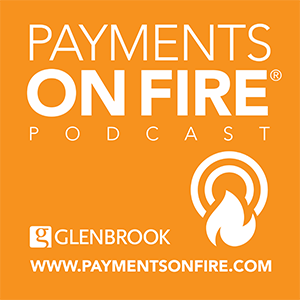Payments Post returns after our editor’s hiatus, brought about by travels to Mongolia and the Philippines chronicled on LinkedIn here. Keen readers will remember from our last edition that Justin set out to find evidence of the elusive Russian sanctions-skirting Mir card system. He did not, although that’s probably for the best. He did, however, have plenty of time to reflect on the state of the payments industry. One nagging thought kept coming up: We spent so much of the past few years talking about the threats and opportunities associated with buy now pay later but those conversations seemed to fizzle away in recent memory. What happened? BNPL hasn’t disappeared by any stretch of the imagination. But as the space has matured and growth has cooled (particularly in the higher cost of capital environment we’re in today), excitement has waned. But in a Summer that’s lacked a standout blockbuster news item, except perhaps for the Visa Flexible Credential (VFC) announcement we described in our last edition, it’s an excellent time to revisit the prime use case for VFC: BNPL. How are providers positioning themselves in the current environment, how are consumers using their tools, and how are regulators and issuers responding?
Let’s start with providers. Early in the pandemic lockdown days, I remarked that it seemed like the easiest way to secure VC funding was to position your company as “the BNPL provider for [insert country or industry vertical here].” But today, after some investor pullback, some regulatory scrutiny, some consolidation, and the harsh realities of consumer repayment behavior, the BNPL space looks very different. As a result, we see continued innovation from established players seeking to retain their industry position. Zip recently partnered with Stripe to increase acceptance in the US through a no-code integration for merchants using the Stripe platform. And Klarna is also in the news. The onetime BNPL darling that saw its valuation slashed from a high of over $45 billion in 2021 to less than $7 billion just a year later is moving away from its core pay later offering to… something different.
The organization now describes itself as “the AI-powered global payments network and shopping assistant,” but is following a pattern we’ve observed across the industry of slowly becoming more “bank-like” in their approach to consumers. Take, for example, yesterday’s press release announcing Klarna’s new balance and cash back features. Consumers can store funds within the Klarna environment and accumulate cash back rewards in their account. It’s an arrangement that sounds pretty similar to, say, keeping your funds in a Citi checking account and using a Citi Double Cash rewards card for everyday spend, although there does not appear to be support for account funding via direct deposit at this point. In any case, it seems like a move that’s indicative of BNPL providers’ ambitions to move into a more everyday, full-service(ish) role for the consumers they serve.
So who are these consumers? And how are using BNPL products today, now that the novelty has worn off? The answer is especially important to regulators concerned that easy access to funding combined with a lack of well-established repayment reporting could allow financially vulnerable consumers to spend beyond their means. So while Afterpay (in a June press release) touts that 4 out of 5 consumers view BNPL “effective solution to alleviating financial stress, especially among Millennials and Gen Zs,” regulators fear that consumers may unwittingly worsen their financial situations through such products. In a July blog post from the Federal Reserve Bank of Atlanta, Retail Payments Risk Forum expert Claire Greene argues that “BNPL has become a mainstream credit product that some families use to get by from day to day” and that others use as a substitute for unsecured loans. This is consistent with the CFPB’s interpretative rule that BNPL products accessed through digital user accounts “mimic” credit card loans and should be subject to certain Reg Z requirements. Issued in May, the comment period ended earlier this month.
At the same time, BNPL faces headwinds from the issuing community. Threatened by BNPL upstarts’ credit alternatives, issuing banks responded with their own installment solutions. In July, Chase moved to block customers for paying BNPL providers with their credit cards. The move shields consumers from the risks associated with using credit to pay off credit, but cynical onlookers have noted that it also pushes consumers towards Chase’s in-house installments product. And it seems like issuers are having some luck in this space: A July Digital Transactions article states that issuer installment programs “are on par in popularity with in-store installment offers [like Klarna].” And the first-ever JD Power BNPL customer satisfaction survey shows issuer solutions with higher satisfaction ratings than conventional BNPL providers across the board.
So BNPL remains popular for consumers, but their similarity to traditional credit products makes them vulnerable to regulatory and issuer-led offensives. Will BNPL providers’ consumer appeal shield them? Will they be able to diversify their offerings? We’ll keep an eye on the market as it continues to mature and evolve.



